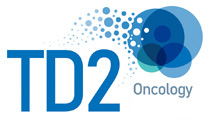Immunophenotyping is a tool used to profile immune cells in peripheral blood, tissues and tumor samples. Combinations of antibodies, tagged with different fluorochomes, are used to detect proteins on the cell surface or within the cell (intracellular). Labeled cells are then acquired on a flow cytometer. FCSL has extensive experience designing immunophenotyping panels, either standard panels or more complex panels that include activation markers, exhaustion markers, intracellular cytokines, and phosphorylation of intracellular proteins. We currently support immunophenotyping across multiple species, including human, non-human primate, canine, pig, mouse, and rat.


FCSL has the ability to measure 10-colors/parameters within a single tube. We can further identify T cell subsets (Central Memory, Effector Memory, Regulatory T cells, Exhausted T cells). For example, in Panel C, Human CD4 cells are gated from CD45+ Lymphocytes, and further gated by CD45RA vs CCR7 to define memory subsets, or to Regulatory T cells.

In addition, the functional/activation status of these T cell subsets can be measured: in Panel D, Ki67 marks proliferation in CD8 cells, and PD-1 and CD69 are used to assess activation. Only CD8 cells are shown, but the same analysis can be applied to CD4 cells.

But, it’s not all about T cells: Immunophenotyping can be used to identify Subsets of B cells. In Panel E, from the lymphocyte gate, B cells are gated by CD19 vs CD20. CD19+ cells are further gated to Memory and Naïve B cell subsets. Plasma cells can also be quantitated With the Addition of CD38 to the panel.

Humanized mice are genetically immune-deficient mice that have been engrafted with human stem cells to reconstitute a human immune system. They provide an invaluable tool for studying human immune cell function and the effects of drugs on human immune cells. In Panel F, immunophenotyping can be done by first separating human leukocytes (hCD45+) from existing mouse leukocytes (mCD45+) Next, T cells are gated by CD3, and finally, CD4 and CD8 populations determined. Although not shown, further subsets of T cells and their activation/proliferation can be determined.

Immunophenotyping is an essential tool for monitoring drug treatment, or disease status and progression.
FCSL is pleased to offer the following immunophenotyping panels.
- Standard T cell, B Cell and NK Panels (TBNK)
- Regulatory T cells
- Memory, Naïve and Effector T cells
- TH1/TH2/TH17/TH9 T cells
- T cell activation/proliferation
- Intracellular Cytokines
- Phospho pERK, pAKT, pSTAT1, pSTAT5
- Memory B cells and Plasma Cells
- Humanized Mouse Immunophenotyping
- Customized Immunophenotyping Panels
FCSL is also excited to announce the addition of Cytek Aurora instrumentation to expand our antibody panel configurations to 15+ colors. These expanded panels are available for use on exploratory projects.

